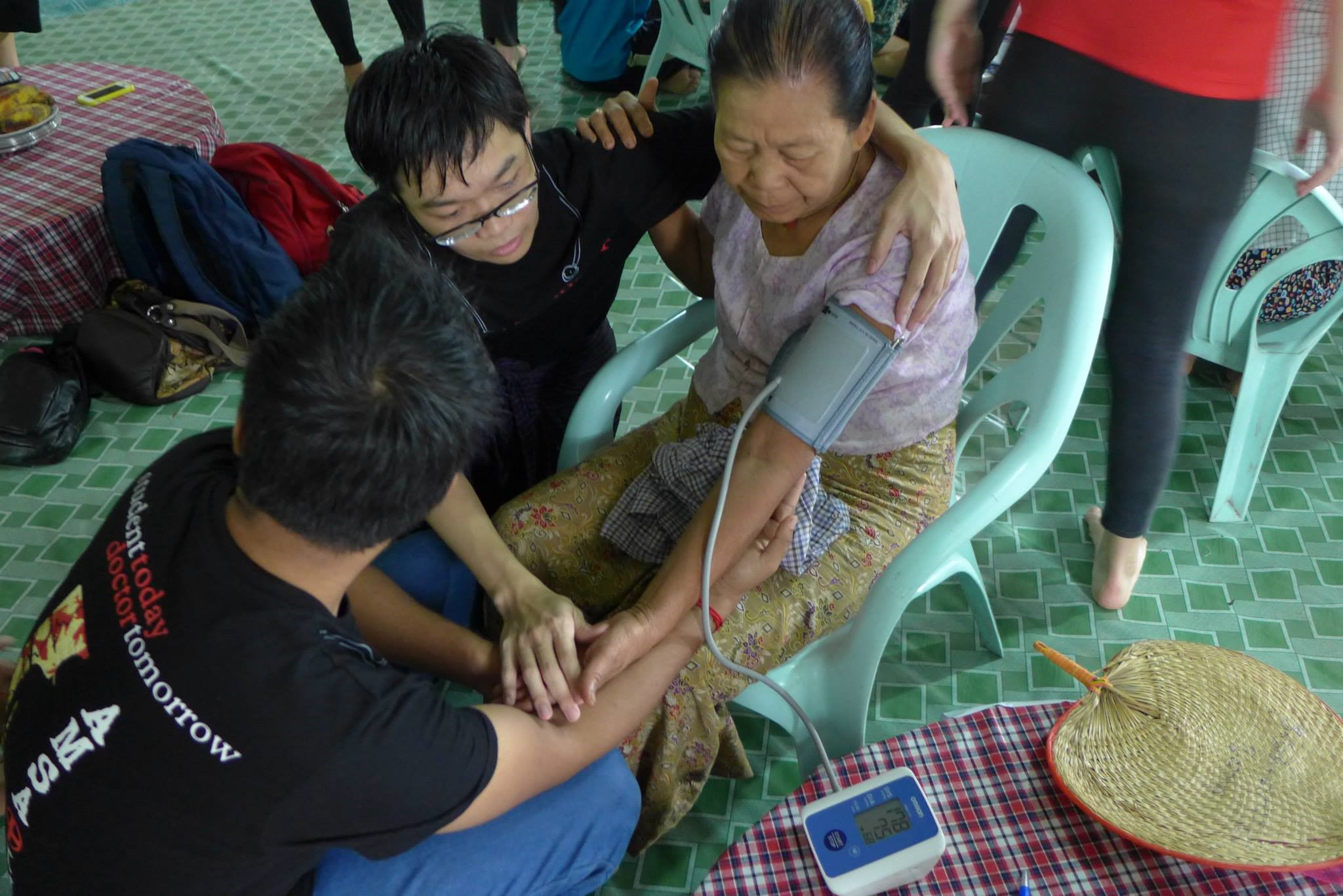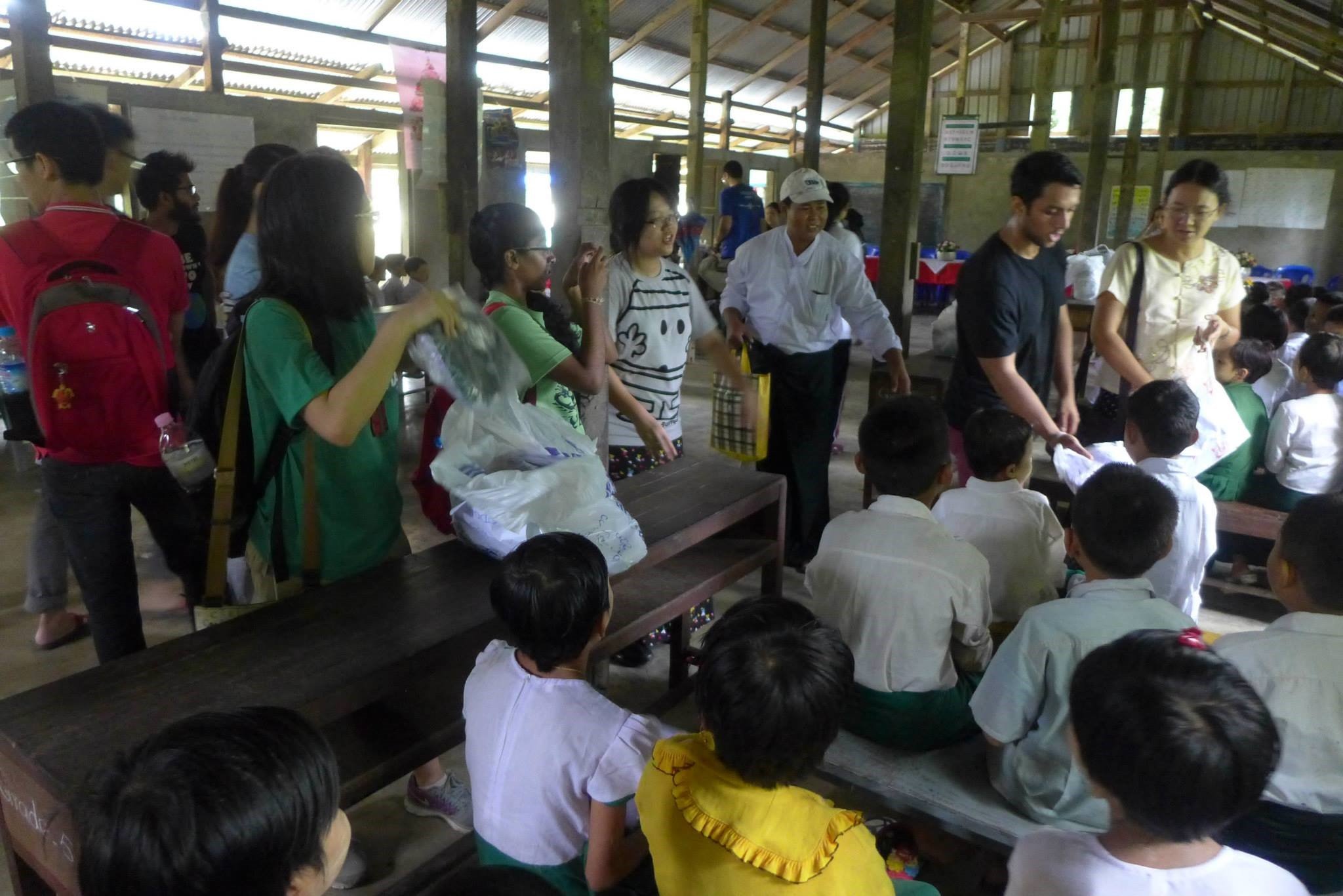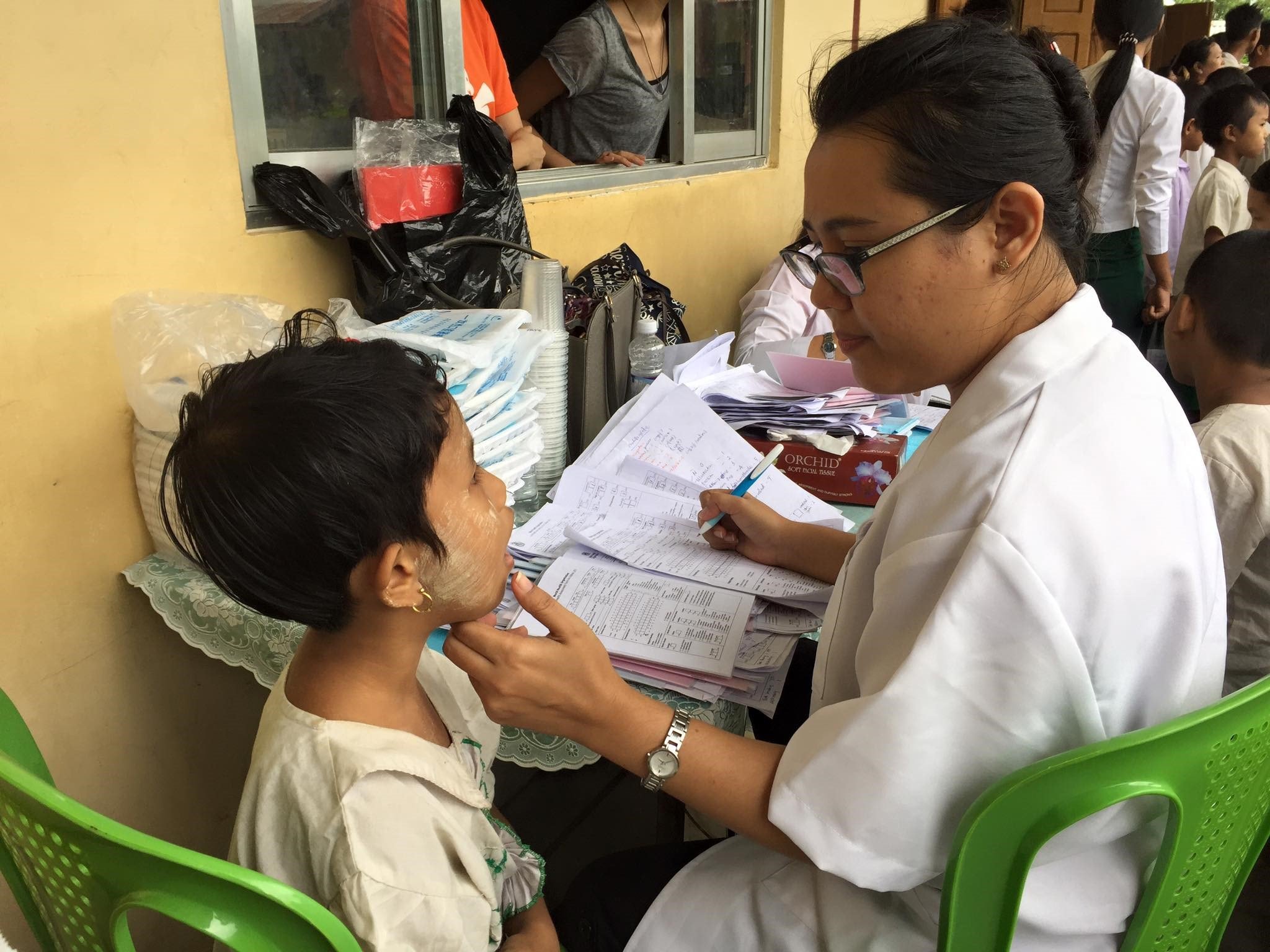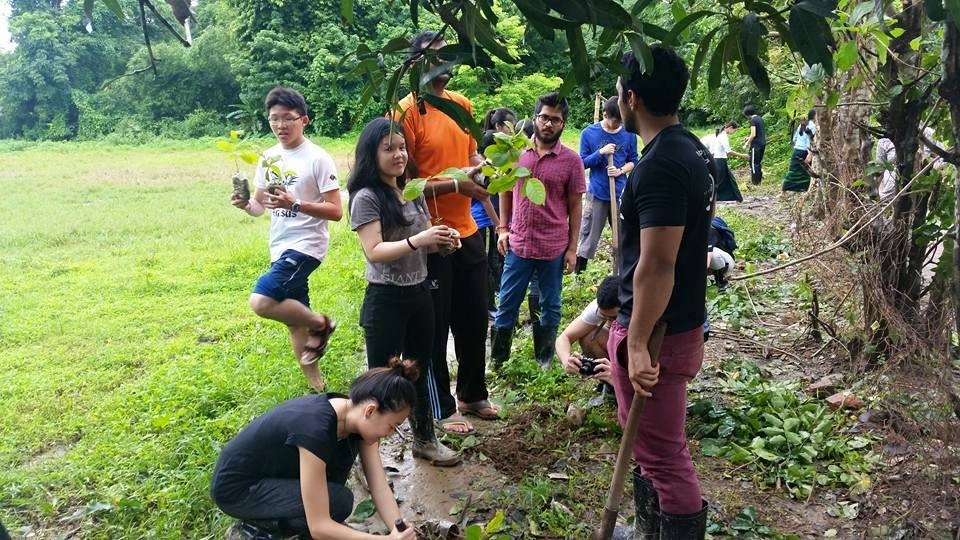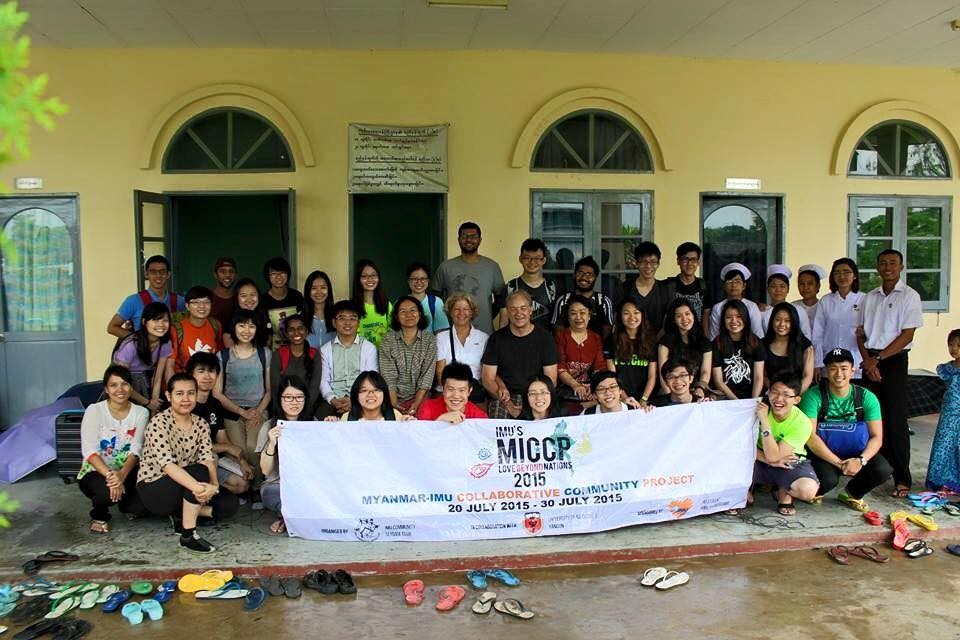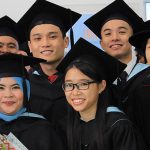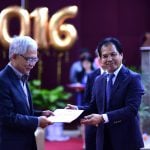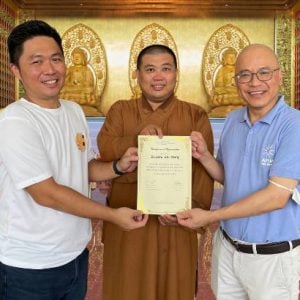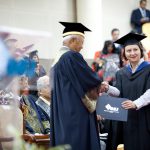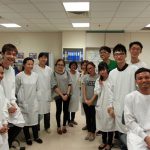20-30 July 2015 – Accompanied by 4 Faculty members and 1 external volunteer, 30 students from IMU embarked on a 10-day community service mission to Myanmar. The Myanmar-IMU Collaborative Community Project (MICCP) is currently in its second year. The first two days were spent on preparations for mission work as well as University of Medicine 1 campus visits, followed by the 5 days of mission work, and ending with 3 days of sightseeing in Bagan.
The team comprised of 30 students of different nationalities from various programmes which included Medicine, Pharmacy, Dietetics and Nutrition, Chiropractic and Psychology. Faculty members who participated in this project included Dr Ni Ni Win, Dr Edward Crowther, Dr Htar Htar Aung as well as the recently retired Prof Hla Yee Yee who gladly joined us for our village work. We were also honoured to have 2 Burmese dentists from the Myanmar Dental Association joining us in our team.
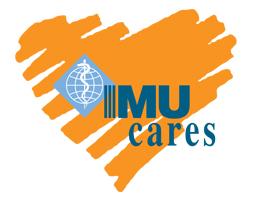 We returned to Wet Chaung village located in Kyaunggone Township, Irrawaddy state, Myanmar this year. Extensive project planning and fundraising were implemented since March this year. Chosen student participants not only had to do preparation work for the planned activities, but also be heavily involved in pledge card fundraising, of which they had to collect donations outside of IMU. Thanks to their dedicated effort as well as generous donations from clubs and Faculty staff, we managed to raise an astounding RM18903.19. The money raised was used to buy milk powder for 110 elderly and 143 children below 5 years old, library furniture, books and first-aid items for the village school; a refrigerator as well as 1 solar panel for its electricity supply for the hospital; stationery and school uniforms for the school children; vitamin supplements for pregnant women; toothbrushes, mosquito nets, boots for the villagers; and miscellaneous items for the monastery.
We returned to Wet Chaung village located in Kyaunggone Township, Irrawaddy state, Myanmar this year. Extensive project planning and fundraising were implemented since March this year. Chosen student participants not only had to do preparation work for the planned activities, but also be heavily involved in pledge card fundraising, of which they had to collect donations outside of IMU. Thanks to their dedicated effort as well as generous donations from clubs and Faculty staff, we managed to raise an astounding RM18903.19. The money raised was used to buy milk powder for 110 elderly and 143 children below 5 years old, library furniture, books and first-aid items for the village school; a refrigerator as well as 1 solar panel for its electricity supply for the hospital; stationery and school uniforms for the school children; vitamin supplements for pregnant women; toothbrushes, mosquito nets, boots for the villagers; and miscellaneous items for the monastery. 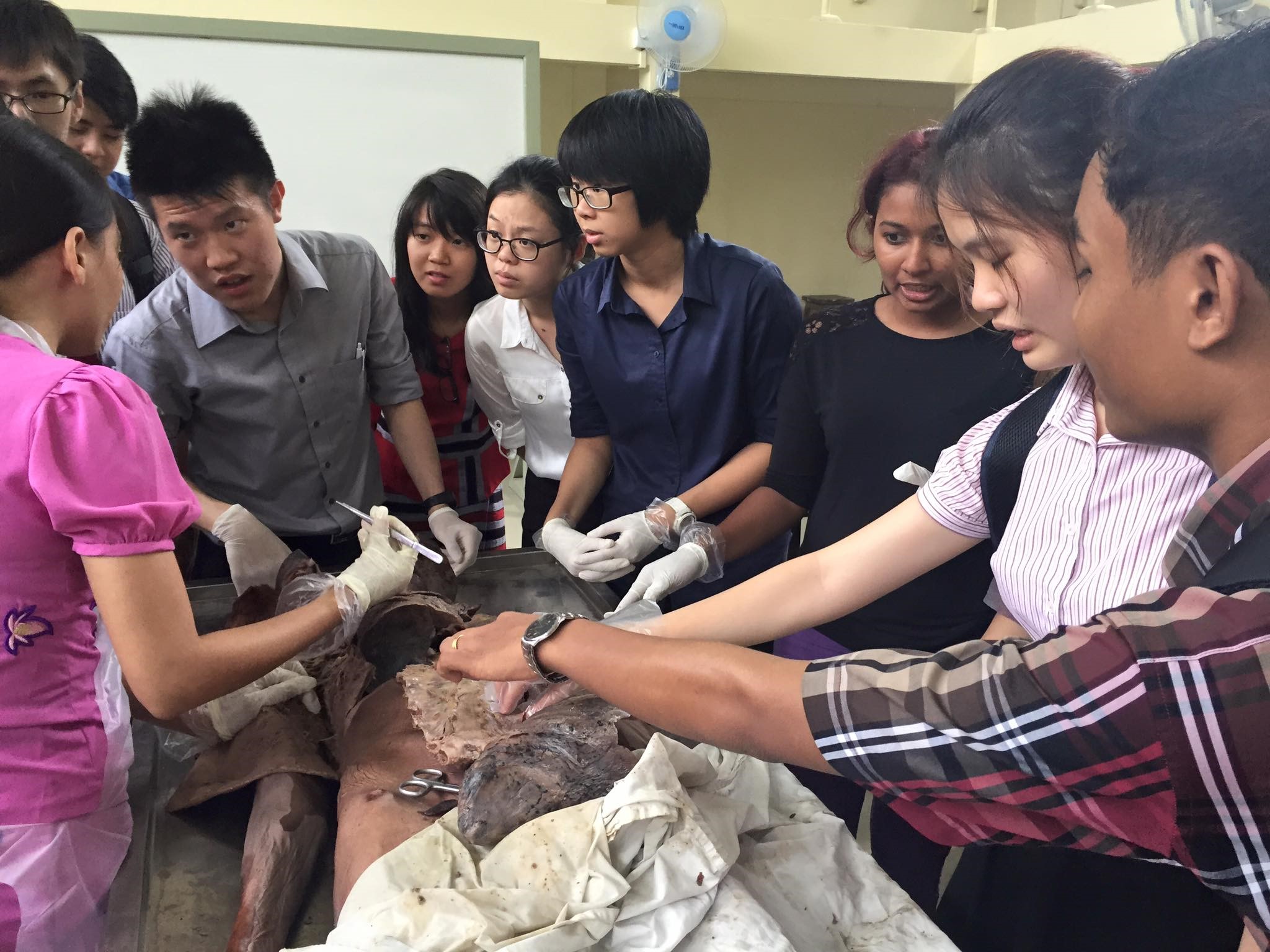
We also allocated RM350 to be donated to University of Medicine 1’s anatomy dissection room, as well as funds to purchase dental screening kits to be used in our health screening event. IMU Cares supported us tremendously by lending us and sponsoring health screening equipment and health record cards, whilst we also received toothpaste from IMU Oral Health Centre and Zantel deworming medications from Dentsu.
Unlike last year’s pioneer committee where the primary challenge lied in obtaining approval for project implementation, this year’s committee’s even tougher responsibility was to meticulously plan for and execute mission work that were able to address the village’s needs and improve its welfare on a long-term basis. Our main objective, thus, was to build and expand on this project’s long-term feasibility, with a pioneering focus on educational resource provision for the village school, children’s general health and village community health education. 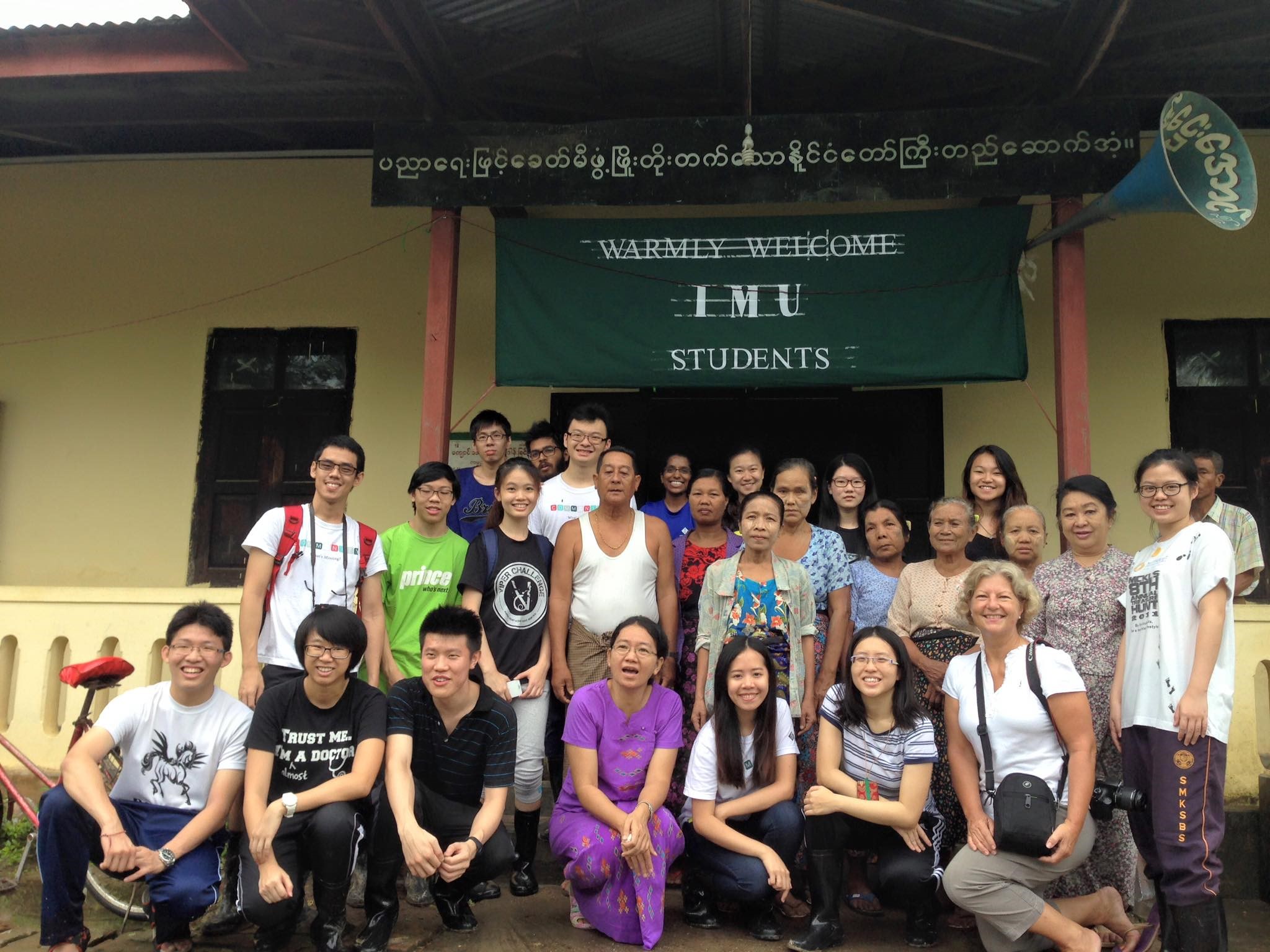 Upon the first day of arrival in Wet Chaung, the aforementioned library furniture and books were donated to the village school to cater to its lack of educational facility. We were also shown the solar panel donated to the institution by last year’s MICCP Committee. We taught the teachers there how to do book cataloguing and the manual borrow-return logbook system to allow for independent facility management.
Upon the first day of arrival in Wet Chaung, the aforementioned library furniture and books were donated to the village school to cater to its lack of educational facility. We were also shown the solar panel donated to the institution by last year’s MICCP Committee. We taught the teachers there how to do book cataloguing and the manual borrow-return logbook system to allow for independent facility management. 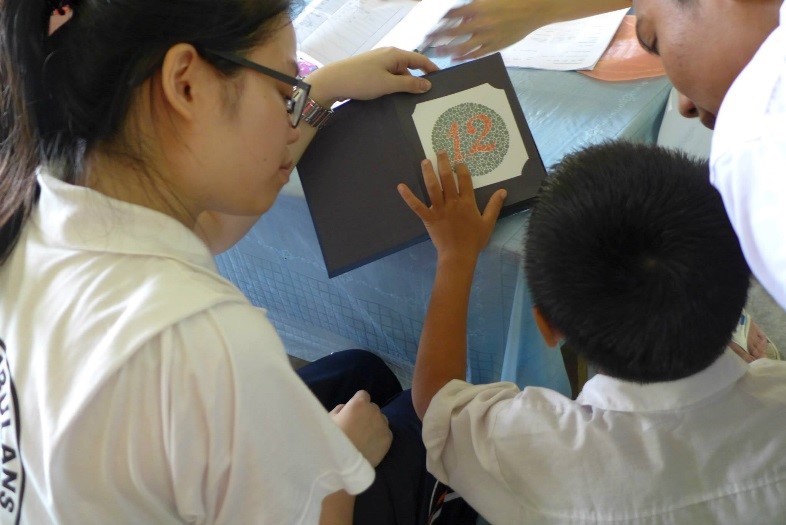
On the subsequent day, we conducted a station-based nutritional assessment among the village schoolchildren to gauge their nutritional status, whereby BMI, blood pressure, colour blindness, vision acuity, general physical examinations and dental screening were carried out. Health screening for all adult villagers was held in the monastery on the next day. The student participants played an active role in administration in terms of crowd facilitation and ushering, as well as demonstration of basic clinical skills competencies. There was heart-warming interprofessional learning at play among the student participants, as those from other courses were actually implementing the clinical skills taught to them by their fellow medical teammates.
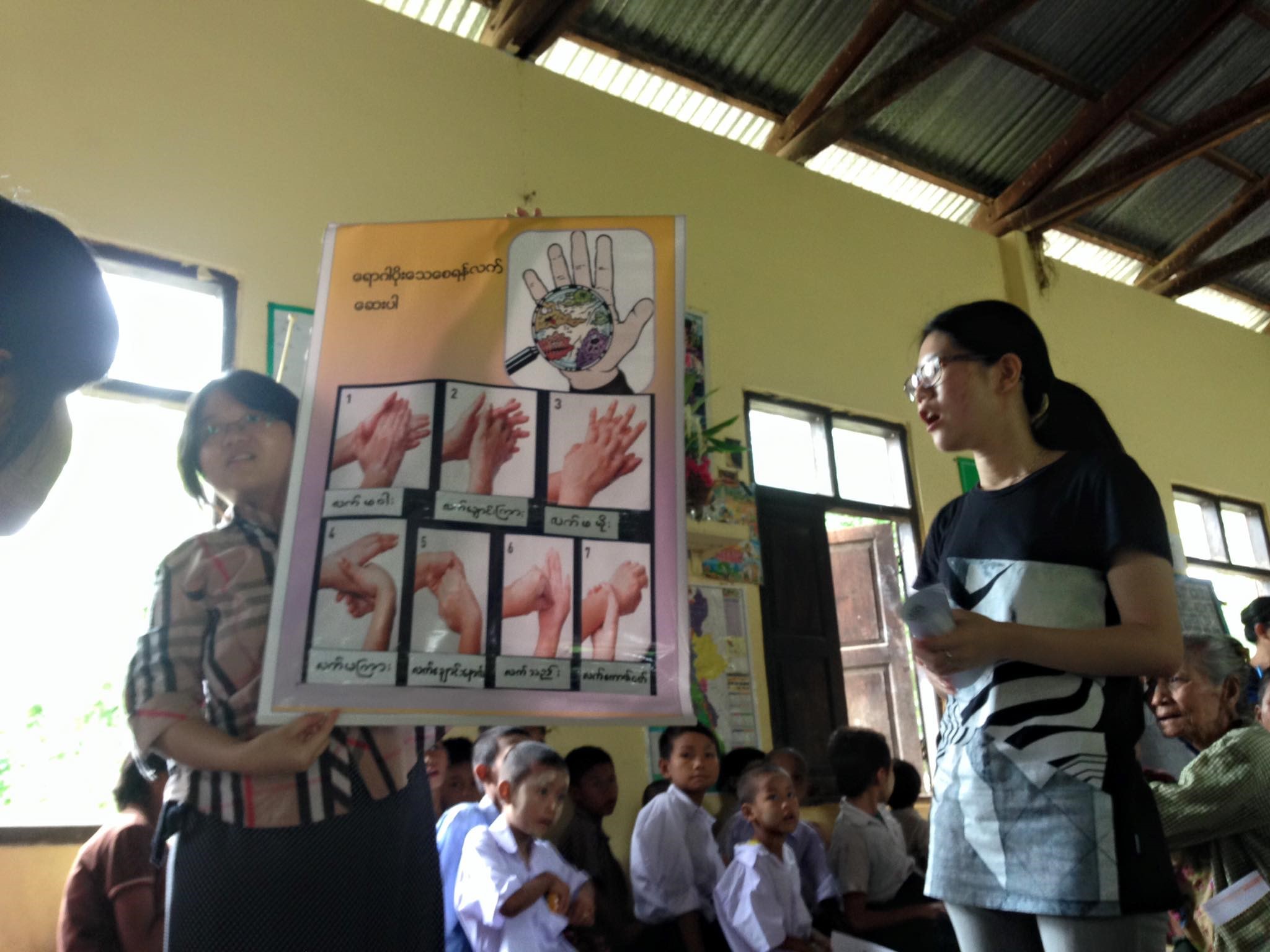
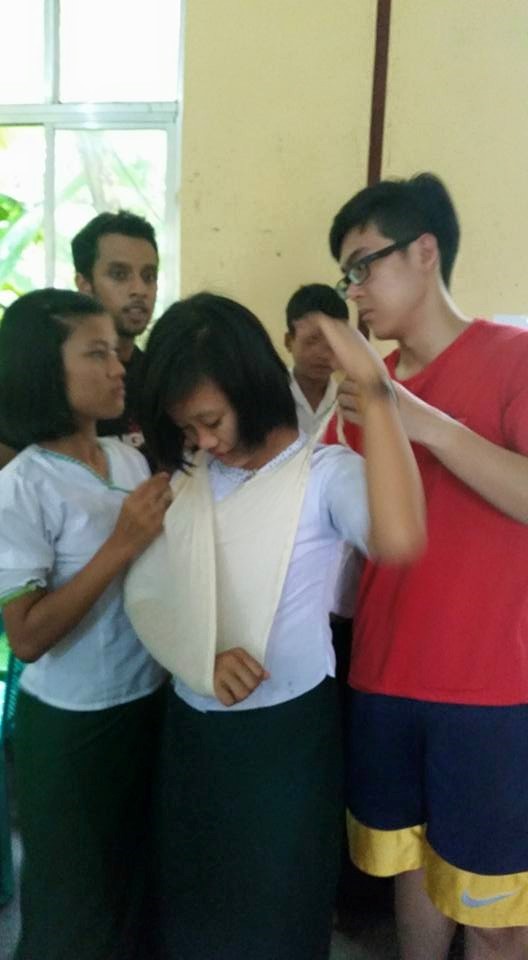
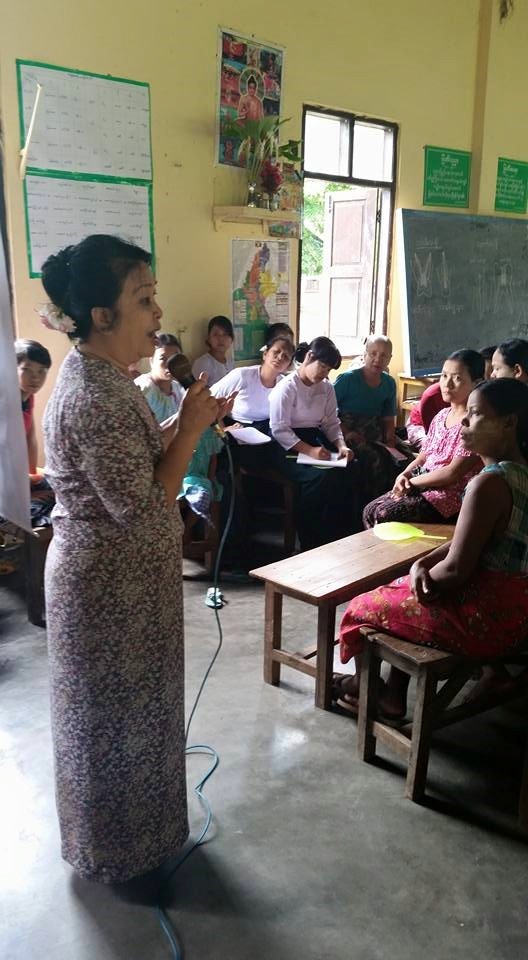 On the fourth day of our stay in the village, we conducted health education among the villagers in the village school. From last year’s health screening data compilation, we acknowledged that hypertension and diabetes are considerably prevalent among the villagers. Hence, these 2 conditions were among the topics for dissemination, along with hypercholesterolaemia, diarrhoea and cholera, oral cancer as well as general topics such as hand washing, food pyramid and teeth brushing. In the afternoon, two talks were conducted simultaneously in two different classrooms, of which first aid education were taught to high school students and teachers, and female health education strictly for female villagers. The latter was of particular interest, as the targeted audience was surprisingly receptive towards sensitive topics of self-breast examination, menopause and sexual health and family planning.
On the fourth day of our stay in the village, we conducted health education among the villagers in the village school. From last year’s health screening data compilation, we acknowledged that hypertension and diabetes are considerably prevalent among the villagers. Hence, these 2 conditions were among the topics for dissemination, along with hypercholesterolaemia, diarrhoea and cholera, oral cancer as well as general topics such as hand washing, food pyramid and teeth brushing. In the afternoon, two talks were conducted simultaneously in two different classrooms, of which first aid education were taught to high school students and teachers, and female health education strictly for female villagers. The latter was of particular interest, as the targeted audience was surprisingly receptive towards sensitive topics of self-breast examination, menopause and sexual health and family planning. 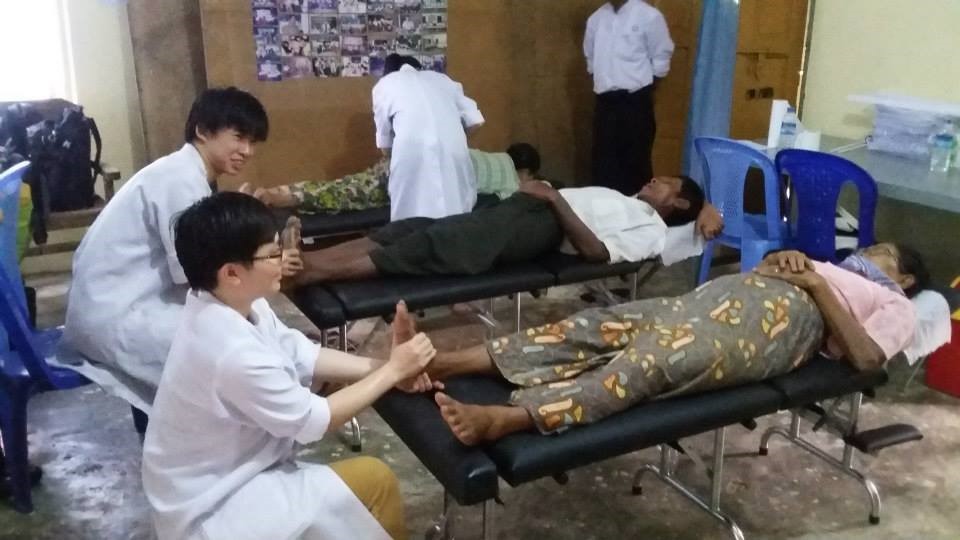
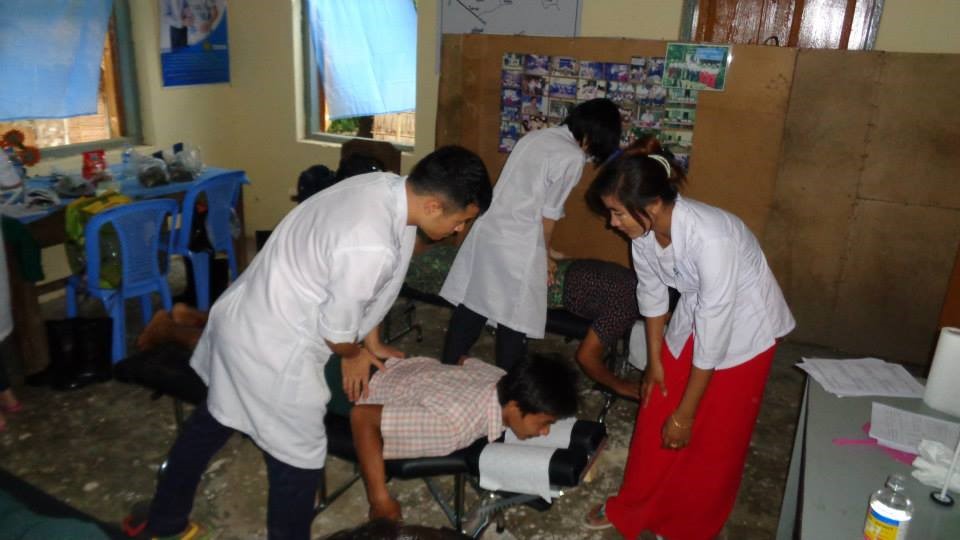 Chiropractic students providing musculoskeletal disorders assessment and treatment to villagers The chiropractic programme at IMU sent a delegation of six chiropractic interns and one clinical supervisor. On the second day of the visit to the village, the chiropractic team set up a clinic at the community health centre. Over the next day, they provided assessment and treatment to over 175 villagers. Treatment was directed towards a wide variety of musculoskeletal complaints with positive response to treatment achieved in most cases. Villagers were provided education on effective self-management strategies to better help them manage their complaints. Detailed clinical records were generated for each villager who attended to provide a foundation for further care over the next few years’ visits by the team.
Chiropractic students providing musculoskeletal disorders assessment and treatment to villagers The chiropractic programme at IMU sent a delegation of six chiropractic interns and one clinical supervisor. On the second day of the visit to the village, the chiropractic team set up a clinic at the community health centre. Over the next day, they provided assessment and treatment to over 175 villagers. Treatment was directed towards a wide variety of musculoskeletal complaints with positive response to treatment achieved in most cases. Villagers were provided education on effective self-management strategies to better help them manage their complaints. Detailed clinical records were generated for each villager who attended to provide a foundation for further care over the next few years’ visits by the team. 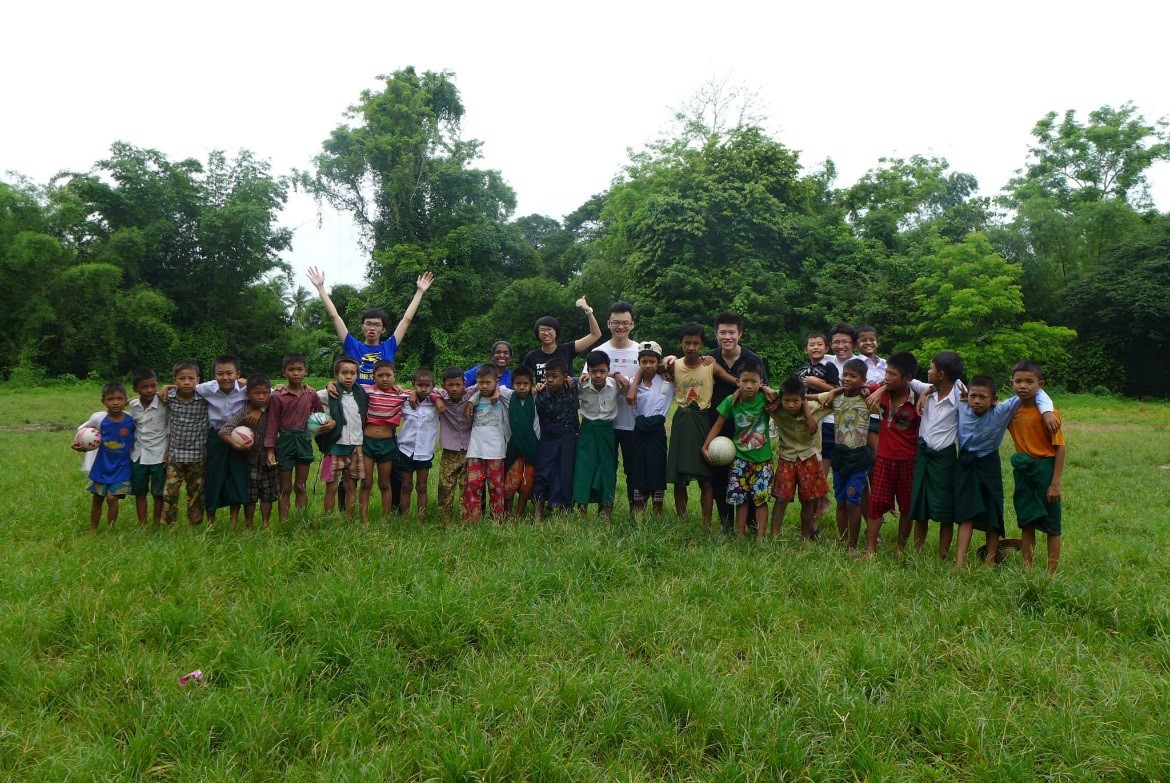
The project participants were also enthusiastically engaged in teaching English to the schoolchildren in a two-to-three hour session, as well as precious bonding moments with them through dances and song-singing in cultural exchange and the unforgettable football-playing in the heavy rain. Rudimentary Burmese words and phrases were also picked up along the way. We started a “Go Green Campaign” this year by planting teak around the school compound.
To be involved in this project for the second time as both participant and committee member is testimony itself to how enriching and eye-opening this project is. We were exposed to the overhanging reality of disparity between rural-to-urban population ratios and healthcare access. Furthermore, we experienced first-hand the limitations of community health interventions, and were given the opportunity to acquire and refine organisation, planning and leadership skills to attempt to overcome those limitations and maximise intervention efficacy under circumscribing circumstances.
Learning to work with others was among the few important qualities emphasised throughout. While ‘extending love beyond nations’ and making our small impact in the lives of those who are underprivileged, we received much more in return – an insightful exploration and development of ourselves, our capabilities and potential as future healthcare professionals through humanity.
This article is written by one of the participants, Tan Chia Ee (Jernell) on behalf of all IMU participants.
Related article: IMU Cares : A Myanmar – IMU Collaborative Community Project




